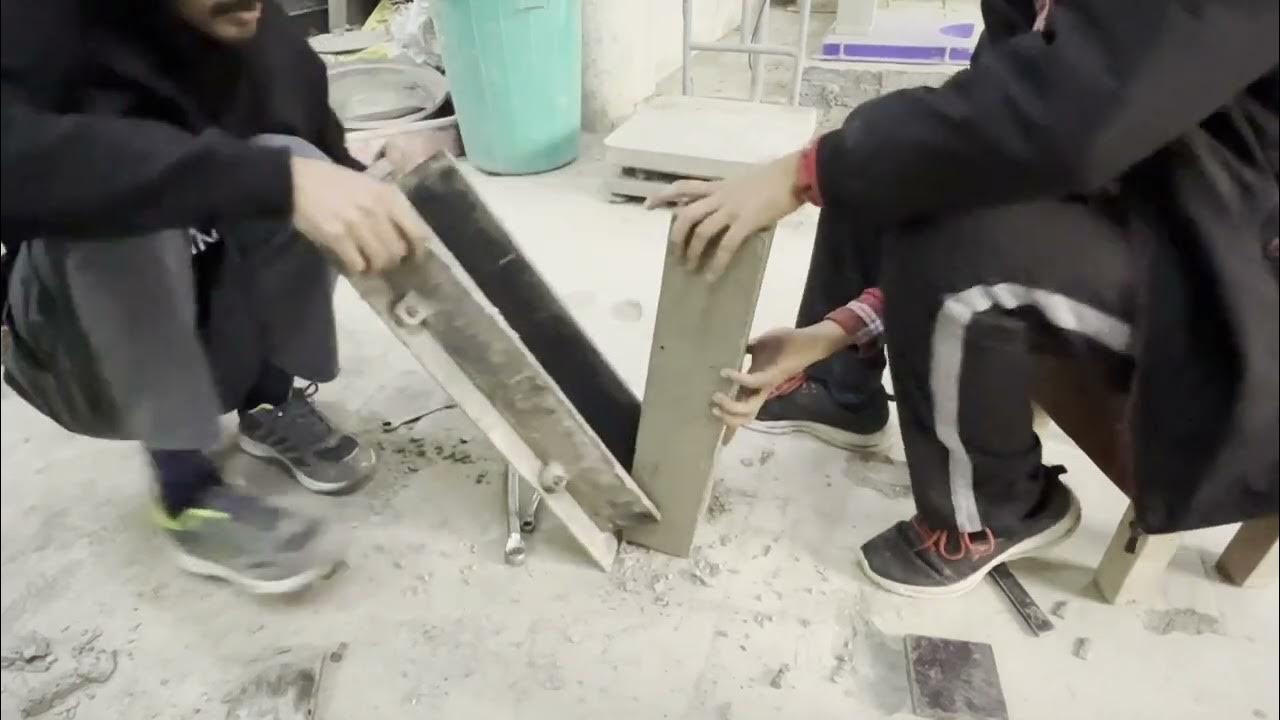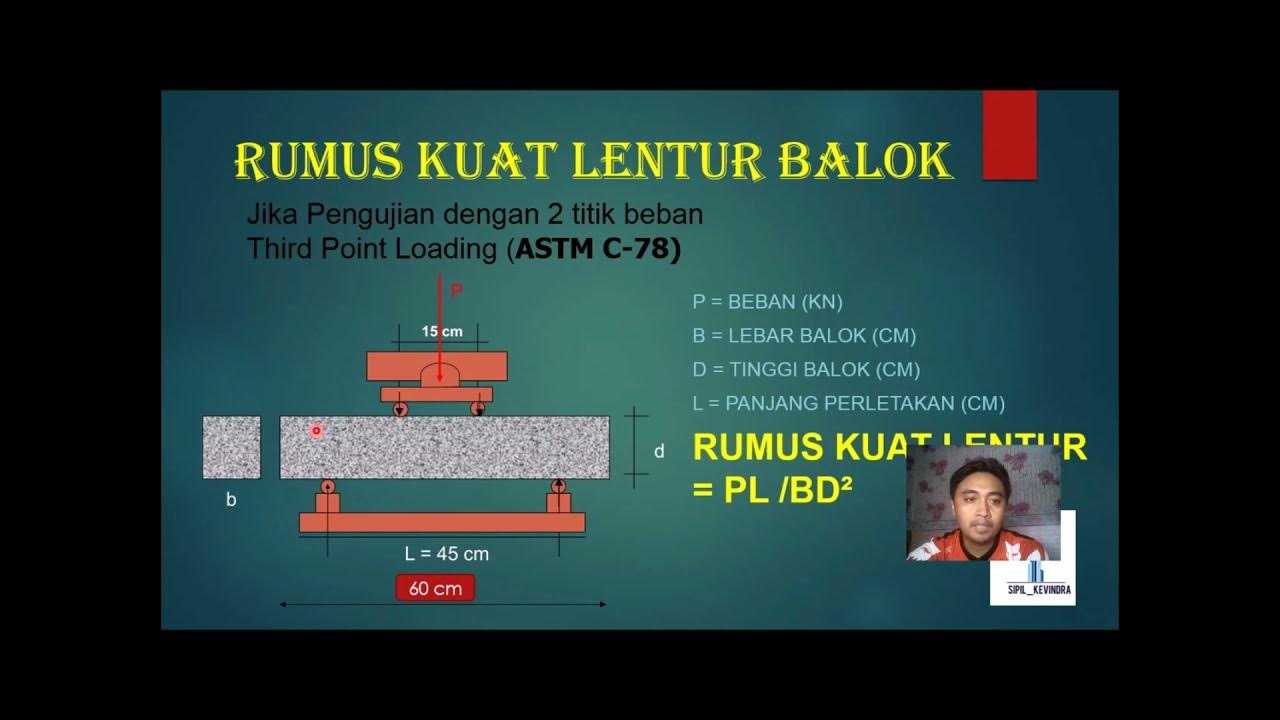Pemeriksaan Kuat Lentur Kayu
Summary
TLDRThis transcript details the procedure for testing the flexural strength of a wooden sample using a bending test. It covers the preparation of the wooden block, measurements of its dimensions, and the setup of the flexural strength machine. The testing process involves applying a load to the wood while measuring the time until failure. The results, including the maximum load the wood can withstand and its flexural strength, are calculated and classified according to standard wood strength categories. The procedure concludes with a detailed analysis of the wood's performance and damage during testing.
Takeaways
- 😀 The experiment involves testing the flexural strength of a wood sample (kamper wood) using a bending machine.
- 😀 The wood sample is 60 cm long, and its width and height are measured at three points: the middle, left edge, and right edge.
- 😀 Calipers (or Vernier calipers) are used to measure the dimensions, ensuring precision by taking three measurements for both width and height.
- 😀 The wood is placed on a bending machine with two supports spaced 45 cm apart, and loads are applied at two points spaced 15 cm from each support.
- 😀 The load application is timed using a stopwatch, which starts when the load touches the wood and stops when the load reading is maximized or the wood fails.
- 😀 The maximum load recorded during the test is 2705 kN, and the time until the wood reaches failure is 34 seconds.
- 😀 The wood sample is inspected for damage after the test, and cracks are measured to assess the extent of the failure.
- 😀 The results of the measurement show an average width of 391 mm and an average height of 5807 mm.
- 😀 Flexural strength is calculated using the formula involving the bending moment and the moment of resistance, resulting in 937 kg/cm².
- 😀 Based on the calculated flexural strength, the wood sample is classified into strength class 2 to 4 according to established standards.
- 😀 The test demonstrates that the wood sample can withstand a significant bending load before failing, making it suitable for use in construction where such strength is required.
Q & A
What is the purpose of the bending strength test on wood?
-The purpose of the bending strength test (kuat lentur) is to measure the maximum load that a wood sample can withstand before it fails or deforms. This test helps in determining the mechanical properties and classification of the wood for construction or engineering purposes.
What tools are required to conduct the bending strength test?
-The tools required for the bending strength test include a caliper (khalifah or jangka sorong) for measuring dimensions, a stopwatch to time the test, a flexural testing machine to apply the load, and cutting tools to prepare the sample.
How is the wood sample prepared before the test?
-The wood sample, which is a rectangular block, is first measured for its dimensions (width and height) at three different points: the center, left side, and right side. Then, the sample is placed on the flexural testing machine with appropriate support points and loading points.
How are the dimensions of the wood sample measured?
-The dimensions (width and height) of the wood sample are measured using a caliper. Three measurements are taken at different points: the center of the sample, the left edge, and the right edge, to ensure accuracy.
What is the role of the stopwatch during the test?
-The stopwatch is used to measure the time from when the load first touches the wood sample until the sample either breaks or reaches its maximum load capacity. This helps in recording the time taken for the wood to fail under stress.
What is the maximum load the wood sample can withstand in this test?
-The wood sample can withstand a maximum load of 2705 N (Newtons) before failure, as recorded during the test.
What is the significance of the time measurement during the test?
-The time measurement (34 seconds in this case) indicates how long it takes for the wood to reach its breaking point or maximum load. This provides insight into the material’s response to stress over time.
How is the bending strength of the wood calculated?
-The bending strength is calculated by dividing the maximum moment (calculated from the applied load and distances between points) by the moment of inertia (which is based on the wood's cross-sectional dimensions). The resulting value represents the material's resistance to bending.
What is the wood's bending strength based on the test results?
-Based on the test results, the wood's bending strength is calculated to be 937 kg/cm².
What does the bending strength classification tell us about the wood?
-The bending strength classification provides an indication of the wood's structural integrity and suitability for use in various construction or engineering applications. In this case, the wood falls into a strength class where the bending strength is between 725 kg/cm² and 1100 kg/cm², which corresponds to class 2 or 3.
Outlines

This section is available to paid users only. Please upgrade to access this part.
Upgrade NowMindmap

This section is available to paid users only. Please upgrade to access this part.
Upgrade NowKeywords

This section is available to paid users only. Please upgrade to access this part.
Upgrade NowHighlights

This section is available to paid users only. Please upgrade to access this part.
Upgrade NowTranscripts

This section is available to paid users only. Please upgrade to access this part.
Upgrade NowBrowse More Related Video
5.0 / 5 (0 votes)





